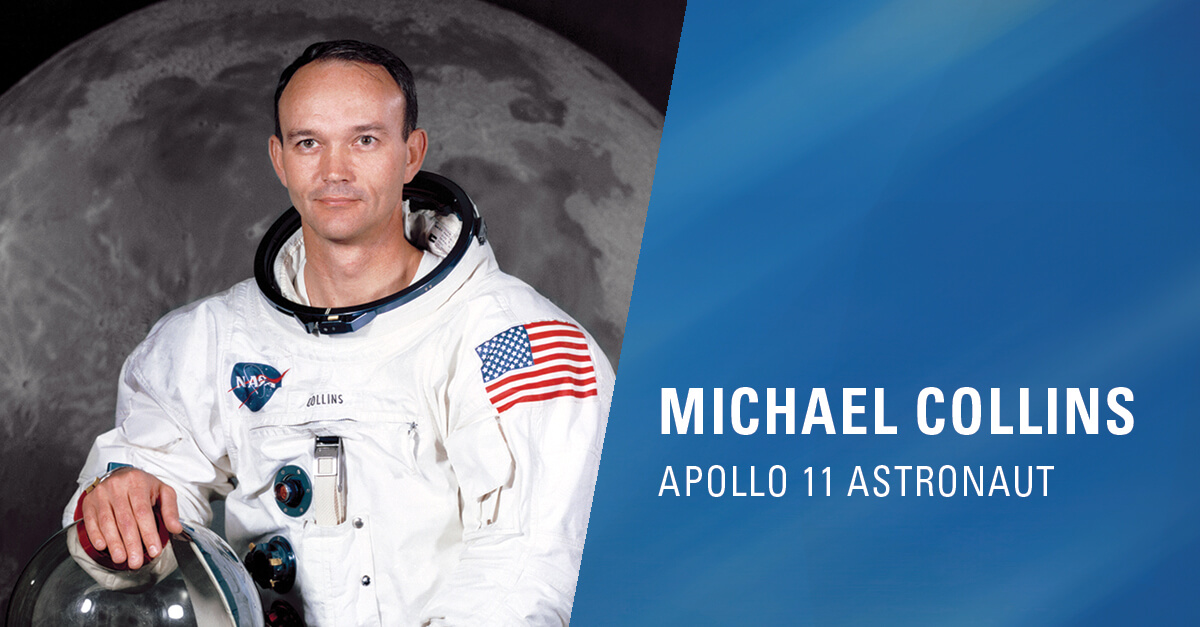
April 29, 2021
NBAA joins with the international aerospace community in honoring the legacy of acclaimed NASA astronaut Michael Collins, who was the driving force behind, and first director of the National Air & Space Museum. He passed away April 28 at age 90.
Collins, an U.S. Air Force Major General, flew to space twice, first as pilot of Gemini 10 in July 1966. Three years later, he was part of the Apollo 11 mission and piloted the command module Columbia in lunar orbit while crewmates Neil Armstrong and Edwin “Buzz” Aldrin became the first humans to land on the Moon.
He later detailed his NASA experiences, including his rare perspective as one of just seven people to have orbited the Moon alone, in his 1974 autobiography, “Carrying the Fire.”
“From his days as a test pilot, during his time at NASA and throughout his entire life, Collins exemplified quiet professionalism and utmost dedication to service,” said NBAA President and CEO Ed Bolen. “He was a tireless advocate for aviation and aerospace, who devoted much of the past 50 years to educating future generations.”
After retiring from NASA in 1970, Collins worked in the U.S. State Department; following his tenure as Air & Space Museum director, he served as undersecretary of the Smithsonian Institution in 1978.
Collins received numerous awards, including the Distinguished Flying Cross and the Legion of Merit. With Armstrong and Aldrin, he shared the 1969 Collier Trophy, the Presidential Medal of Freedom, the Harmon Trophy and the Congressional Gold Medal.


 International Business Aviation Council Ltd.
International Business Aviation Council Ltd.